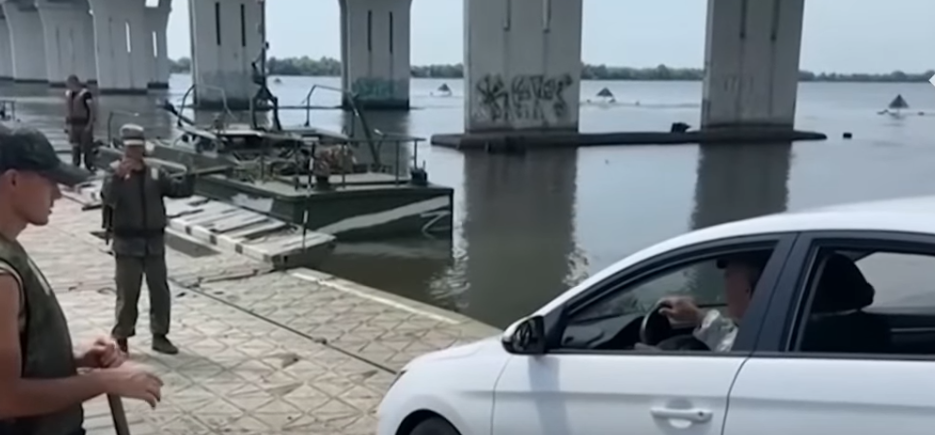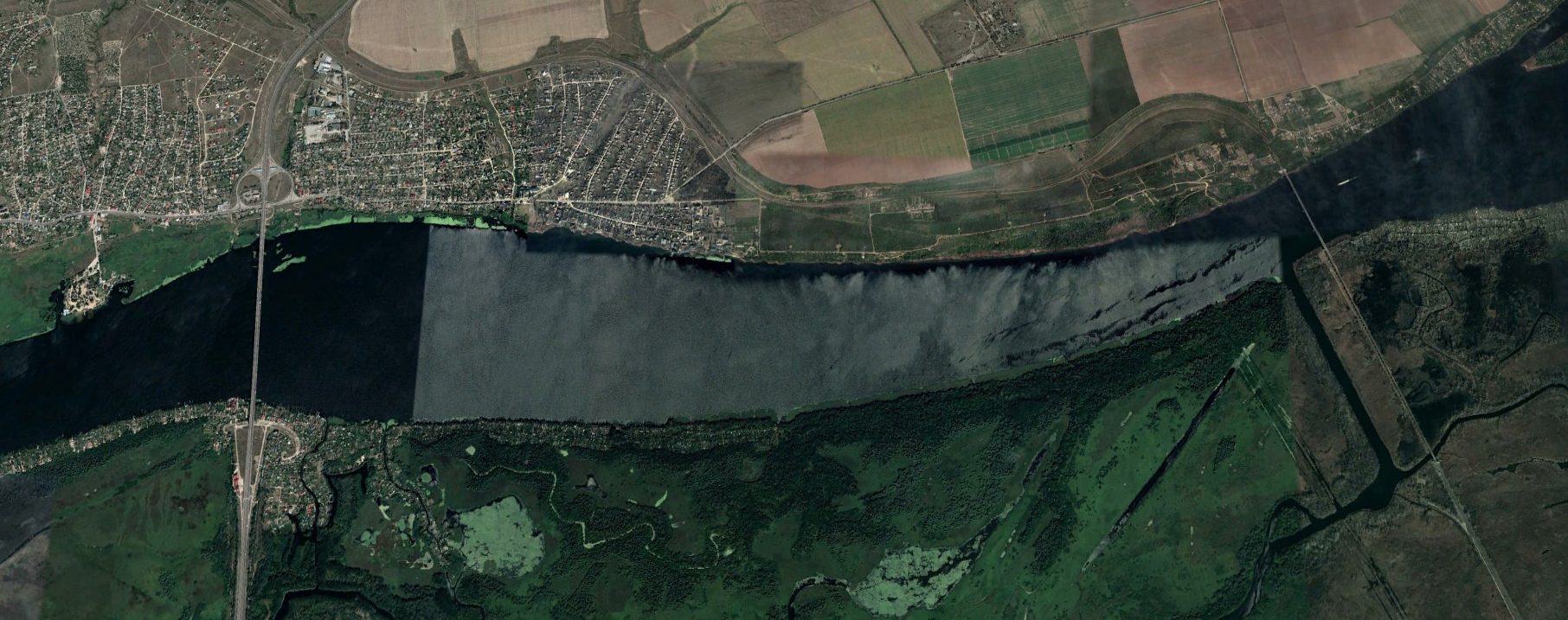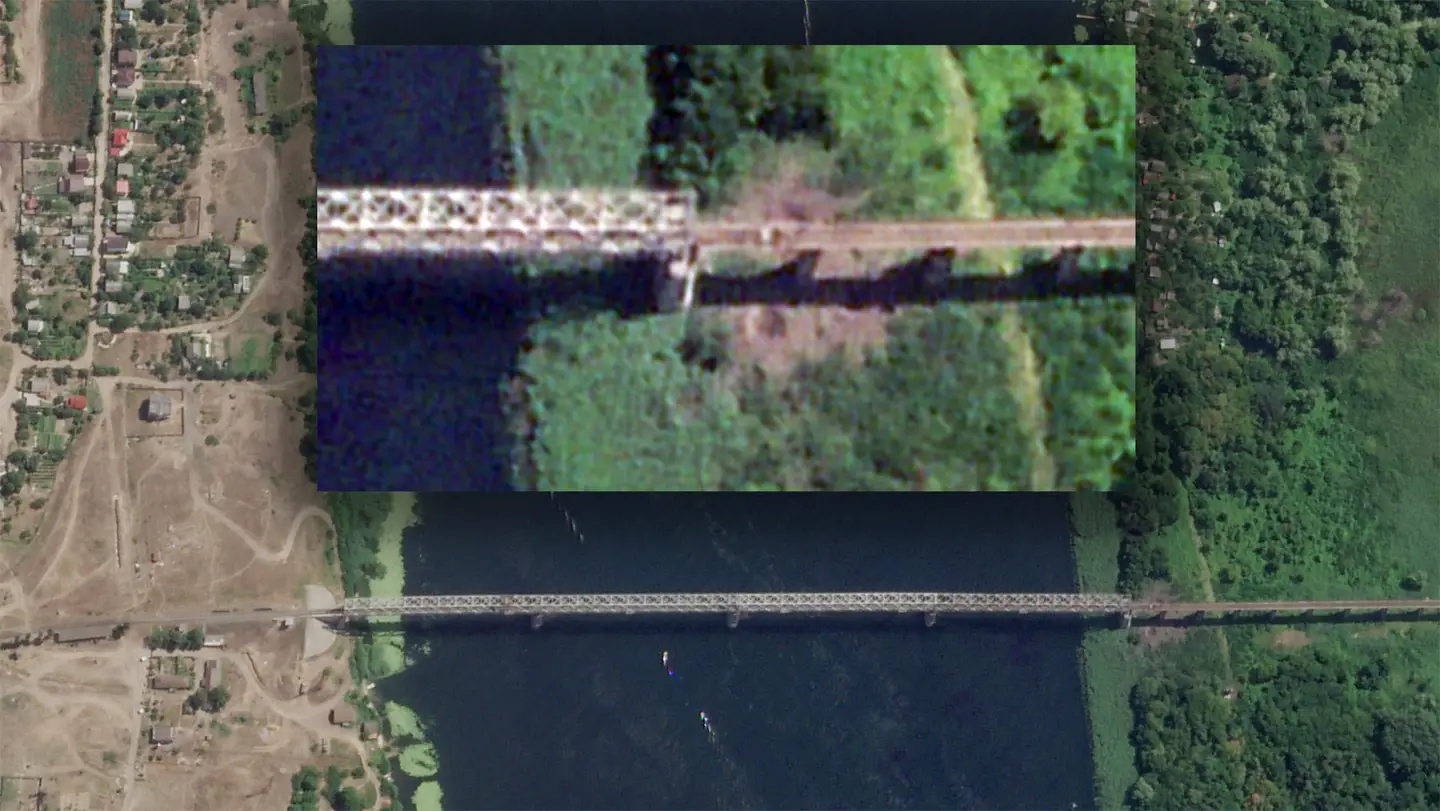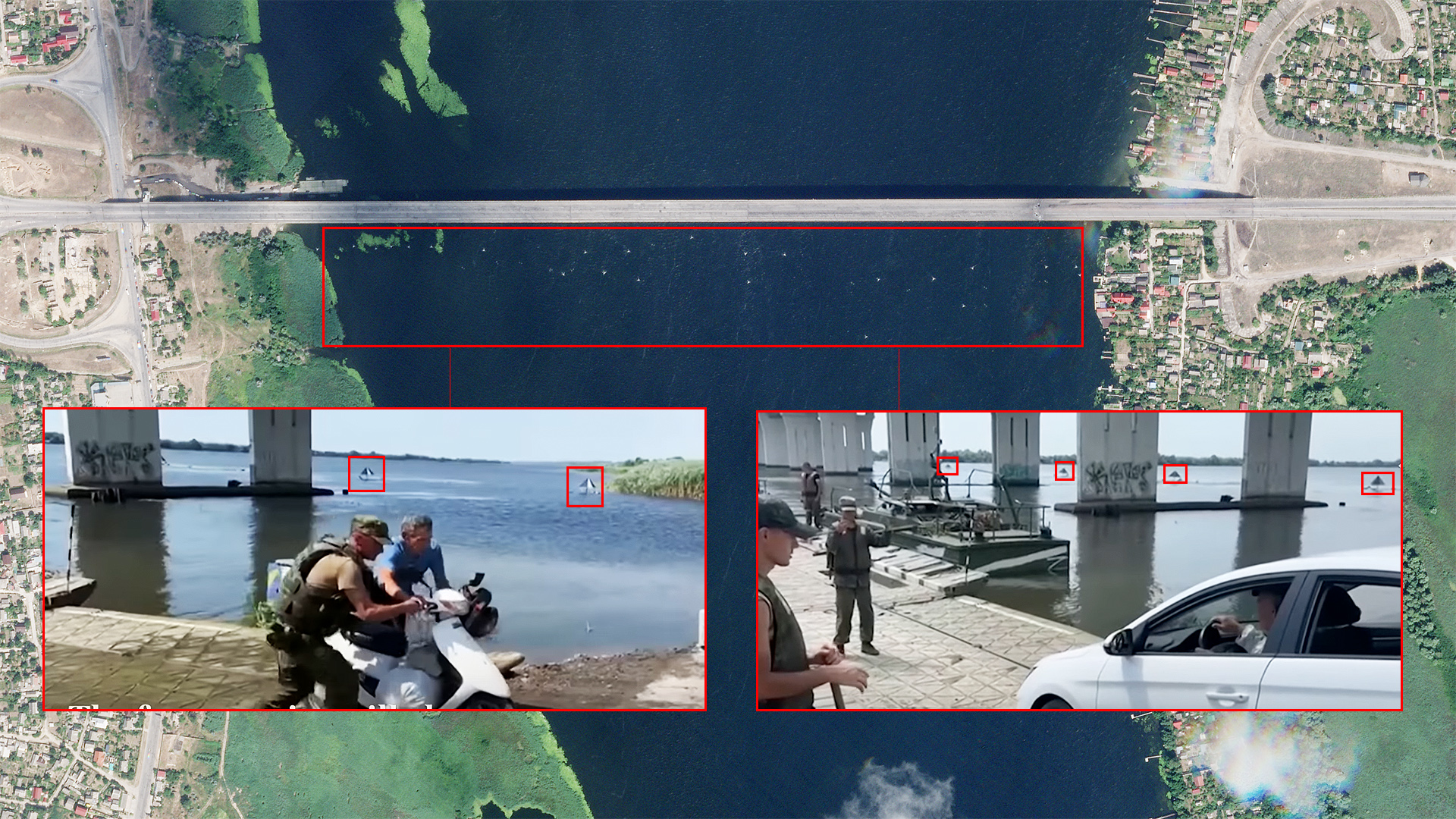The battle for bridges continues in Ukraine with newly obtained satellite imagery revealing that Russian forces have situated a long array of pyramidal radar reflectors in the water near the recently cratered Antonivskiy Bridge and an also recently cratered nearby rail bridge, both of which cross over the Dnipro River. The bridges are vital spans that are critical to supporting Russia’s occupation of Kherson in southern Ukraine.
Days ago, synthetic aperture radar (SAR) data revealed what looked like a pontoon bridge being constructed alongside a rail bridge just up the river from Antonivskiy Bridge. But satellite imagery showed there was no pontoon bridge being constructed. Subsequent high-resolution satellite imagery obtained by The War Zone from Planet Labs now shows a large array of objects dispersed across the channel on the west side of the Antonivskiy Bridge. A smaller number of similar objects can be made out on the west side of the nearby rail bridge.
Video has also appeared within the last 24 hours of ferry operations alongside the out-of-commission Antonivskiy Bridge, with Russia moving critical military supplies and personnel, as well as civilians, across the river via this medium, all while an attempt to repair the damaged bridge is made. In the background, you can clearly see pyramidal radar reflectors spaced out alongside the span which matches what is seen in the satellite imagery.



So, it is clear that Russia has deployed these radar corner reflectors at both locations, making a ‘phantom’ bridge appear next to the real ones on satellite-based radar.
Since work on this article began, additional images have been published showing the reflectors:
Reports of Ukrainian forces using U.S.-supplied M142 High Mobility Artillery Rocket Systems, or HIMARS, to target the Antonovskiy Bridge first began making their rounds online a little over a week ago after the bridge was left cratered on the morning of July 20, but additional hits once again started making headlines on July 26. However, these attacks aren’t to be confused with the strategic strikes against the nearby Antonivskiy Railway Bridge that began on July 28. Both bridges, one intended for highway traffic and the other for trains, are located near each other above the Dnipro River in Kherson, which has been occupied by Russian forces since relatively early in the now over five-month-old conflict.


The highway and railway spans together provide a logistical conduit from Russian-held Crimea into southern Ukraine and especially occupied Kherson. They are also top strategic targets for Ukrainian forces now that their long-range guided artillery arsenal has been supplemented with M31 Guided Multiple Launch Rocket Systems (GMLRS) fired by HIMARS and M270 launchers. Judging by recent Planet Labs imagery obtained by The War Zone, it would appear that Russian forces have begun affixing previously seen pyramidal radar reflectors alongside the highway bridge’s span sometime after July 21 following the initial HIMARS attacks and the railway bridge received them not long after.
While it is important to note that these types of radar reflectors are sometimes used for navigational purposes, how they are deployed and when they were deployed points firmly to this not being the case in this specific scenario. There is also past precedent to consider. In early July, Russian forces were spotted using various countermeasures to prepare the prized $3.5B Kerch Strait Bridge, which connects Crimea and mainland Russia, for aerial attacks. These included smokescreen exercises, but most importantly, they involved the placement of barges covered in similar radar reflectors moved close alongside the bridge. These rudimentary metallic devices, often referred to as corner reflectors, are highly visible to radar systems, with the idea being that they can confuse incoming radar-guided missiles intended to strike the bridge. This can be by providing a more alluring target or making targeting the span itself more troublesome.
Because of the Kerch Bridge’s significant distance from Ukrainian-controlled territory, attempts to strike it have not yet been made due to it being far outside the reach of GMLRS rockets launched from Ukrainian-controlled territory at this time.
These radar reflectors, though, would likely not be successful in confusing a HIMARS rocket strike as the munitions are not radar-guided, making the recently discovered ‘phantom bridge’ of radar reflectors a somewhat confusing addition. Although, we should note that HIMARS does use a radar-like proximity fusing system. But it seems very unlikely that would be impacted by the radar reflectors considering the GMLRS guidance concept that relies on GPS and INS to execute its pinpoint attacks.
The only radar-guided missiles that Ukraine currently has in its possession are U.S.-made RGM-84 Harpoon and locally-produced Neptune anti-ship missiles, which are not really designed for land attack applications. Even if they could be adapted to successfully target the bridge, the damage they could inflict would be questionable.

Thus, the reasoning behind Russia’s employment of these radar reflectors remains unclear. The move may be an effort to pull out all of the stops available to Russian forces to defend its holdings and limit surveillance capabilities as Ukraine’s push to retake the Kherson region heats up. Some reports have even underscored the possibility that Ukrainian forces may spare the Antonivskiy bridges as their complete destruction could limit any potential future Ukrainian offensive southward towards and even into Crimea. Nataliya Humeniuk, a spokesperson for the Ukrainian Armed Forces, reinforced this idea, claiming that the amount and the location of the strikes against the Antonivskiy highway bridge were intentional, implying that the goal of the attack was not to completely destroy the bridge.
There is also the psychological factor. It looks like Russia is doing something, even if it really isn’t all that relevant. Then again, they may think the United States and its allies will give Kyiv the means to hit these bridges with new high-end weaponry that relies on radar targeting. This is like what could be the case with countermeasures deployed near Kerch Bridge, which is out of range of even Ukraine’s new anti-ship missiles. Maybe the installation of these devices is out of some unrealistic fear that NATO could step in and use its advanced weaponry to drop the spans itself.
Most likely, though, it is out of concern that Ukraine’s newly acquired arsenal of anti-ship missiles will be used in an unconventional way against these key bridges, regardless of how unlikely this actually is.
Whatever may come of the Ukrainian attacks on the Antonivskiy bridges, Russia is evidently using some interesting, albeit very crude countermeasures to defend them from a type of attack, that, at least at this time, seems to have a very low probability of occurring. Regardless, we now know that radar reflectors — and lots of them — are now standardized measures for Russia when it comes to trying to protect bridges that are critical to their invasion and occupation efforts.
Contact the author: Emma@thewarzone.com
